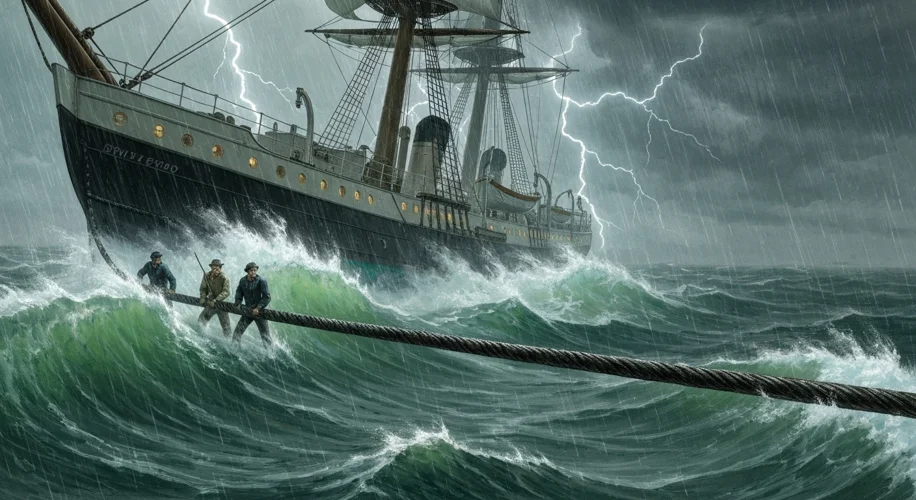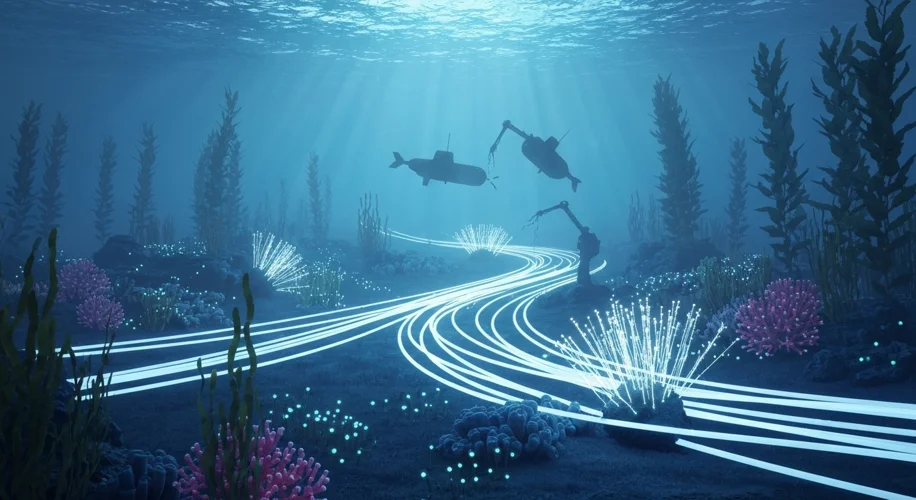In the silent depths of the ocean, a delicate network of cables lies, carrying the lifeblood of our modern world – information. These undersea cables, humming with the pulse of global communication, are the unsung heroes of our interconnected age. Yet, their very ubiquity and critical importance also make them a potent vulnerability, a fact underscored by a history punctuated by disruptions, sabotage, and the nascent stirrings of cyber conflict.
Long before the digital age, the dream of instantaneous global communication was being woven. The advent of the telegraph in the mid-19th century was a revolution, shrinking the world with every transmitted message. The natural progression was to extend this reach across oceans, a monumental undertaking that relied heavily on the deployment of the first transatlantic telegraph cables. Laying these cables was a feat of immense engineering and sheer willpower. Ships like the HMS Agamemnon and the USS Niagara bravely ventured into the unforgiving Atlantic, battling storms and the crushing pressure of the deep to lay down the fragile strands that would connect continents.

However, this ambitious endeavor was not without its perils. These early cables were susceptible to a myriad of threats. Ships’ anchors, dragging across the seabed, could snag and sever the vital lines. Natural phenomena, like underwater landslides or seismic activity, posed constant dangers. And then there was the more insidious threat: human interference.
During the American Civil War, the strategic importance of undersea cables became starkly apparent. Both the Union and the Confederacy recognized their value, not just for communication, but for intelligence gathering and disrupting the enemy’s operations. Confederate raiders, like the CSS Shenandoah, were tasked with severing Union cables, effectively blinding their adversary. This era marked some of the earliest instances of deliberate sabotage targeting communication infrastructure, a precursor to the sophisticated cyber warfare we understand today.
As technology advanced, so did the scale and sophistication of these disruptions. The outbreak of World War I saw a concerted effort by nations to cripple their enemies’ communication networks. Undersea cables, particularly those of the British Empire, were primary targets. German U-boats and naval forces actively sought out and cut these vital links, aiming to isolate Britain and disrupt the flow of information to its allies. The severing of these cables wasn’t just a physical act; it was a strategic strike at the heart of a nation’s ability to wage war and maintain its global reach. The impact was immediate, forcing nations to rely on slower, less secure radio communications, which were themselves vulnerable to interception and jamming.
World War II continued this pattern. The importance of intelligence gleaned from intercepted communications, including those potentially routed through undersea cables, was paramount. While direct physical sabotage of cables was less prevalent due to the war’s shifting fronts and the greater emphasis on aerial and radio warfare, the underlying principle remained: control the flow of information, control the conflict.
The Cold War introduced a new dimension to this struggle. The vast network of undersea cables became a silent battleground. Espionage took on a new form, with nations attempting to tap into these lines to gather intelligence. The Soviet Union, in particular, was suspected of developing capabilities to physically interfere with or tap into NATO’s undersea communication cables. The fear of such operations, often shrouded in secrecy, fueled a constant state of vigilance and technological arms race.
In the modern era, the vulnerability of undersea cables remains a critical cybersecurity concern. While physical sabotage by state actors or terrorist groups is a persistent threat, the digital realm offers new avenues for disruption. A coordinated cyberattack could theoretically target the landing points of these cables, the equipment that manages data flow, or even the routing protocols themselves. Such an attack could cripple global financial markets, disrupt military command and control, and sow widespread chaos.
Today, as we grapple with the complexities of cyber warfare, the history of undersea cable disruptions serves as a potent reminder. The invisible threads that bind our world together are also its potential Achilles’ heel. Understanding this history is not merely an academic exercise; it is essential for appreciating the ongoing challenges in securing our digital future against threats that can, quite literally, operate from the deepest, darkest corners of our planet.
It’s a history that whispers a crucial message: in our hyper-connected world, the silent hum of undersea cables carries not just data, but also the echoes of past conflicts and the specter of future ones.

